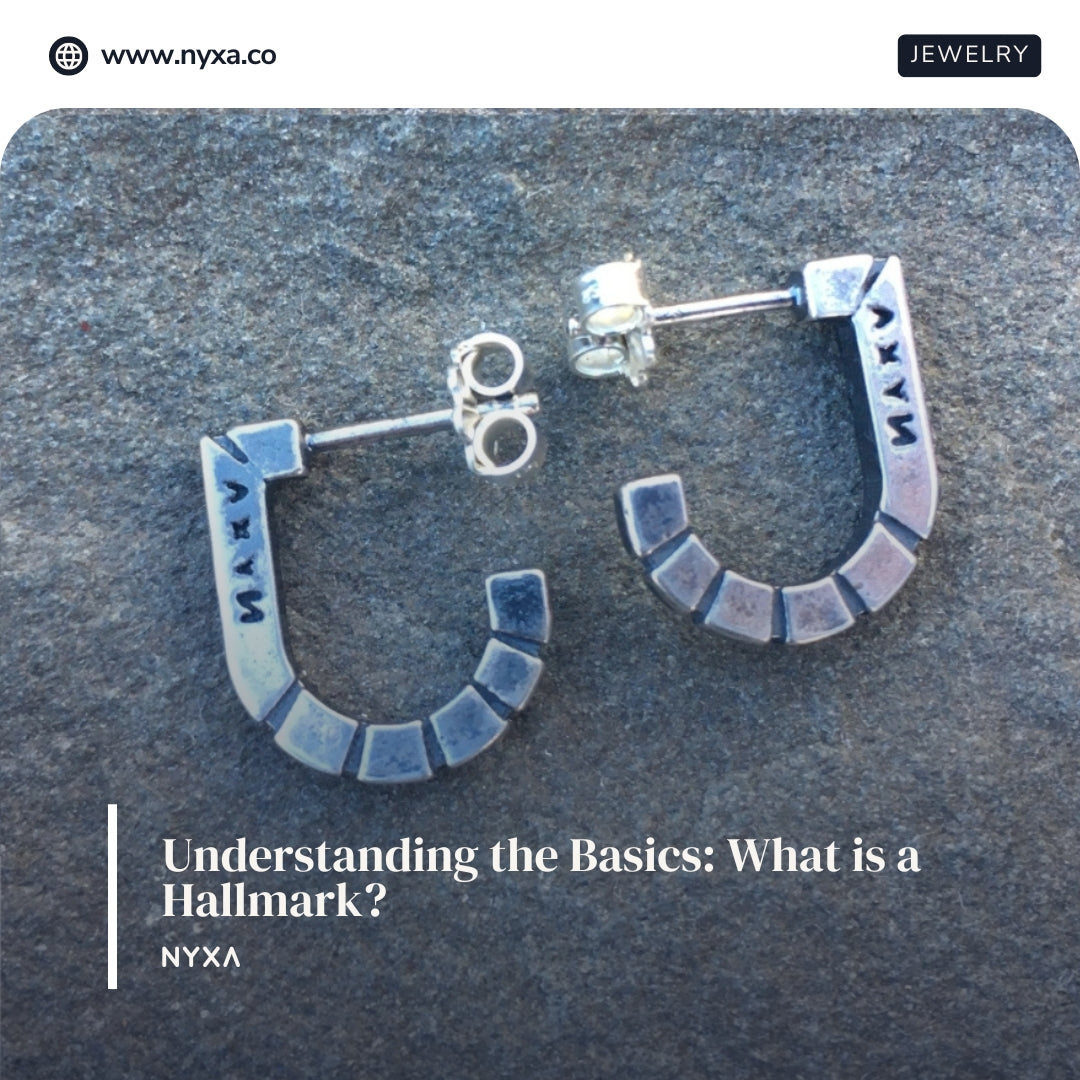
Understanding the Basics: What is a Hallmark?
Share
When you take your treasured jewelry to a jeweler for inspection or repair, the first thing they do is flip it over to scrutinize its hallmark. But what exactly is a hallmark? Essentially, it's an official stamp found on precious metal items, and it serves as a vital key to understanding your jewelry.
A hallmark typically reveals two crucial pieces of information:
Composition of the Metal and Purity
The hallmark tells you the type of precious metal used in your jewelry and its purity level. This information is invaluable, especially if you're keen on knowing the quality of your bling.
The Jewelry's Manufacturer and Origin
Apart from metal details, hallmarks can also provide insights into the jewelry's maker and where it was crafted. This can add a layer of intrigue and history to your cherished pieces.
Types of Marks
There are two primary types of marks commonly found on jewelry:
Hallmark
A true hallmark contains both the precious metal type and its purity. This stamp can be applied by the jewelry maker or an assay's office, guaranteeing the minimum precious metal content present in the jewelry. Here are some common purity marks found on precious metal jewelry in the United States:
| 10K: | 10 karat gold | (41.6% gold, 58.4% alloy) |
| 14K: | 14 karat gold | (58.5% gold, 41.5% alloy) |
| 18K: | 18 karat gold | (75% gold, 25% alloy) |
| 22K: | 22 karat gold | (91.6% gold, 8.4% alloy) |
| 24K: | 24 karat gold | (100% gold) |
| 950PD: | Palladium | (95% palladium, 5% alloy) |
| 950PT: | Platinum | (95% platinum, 5% alloy) |
| 925: | Sterling Silver | (92.5% silver, 7.5% alloy) |
Maker's Mark
A maker's mark is a symbol or initials that indicate the jewelry's creator or origin. The look of each maker's mark is unique to the artist who made it. NYXA Jewelry, for example, uses the brand name "NYXA" as its maker's mark.
The Quest for Makers Marks
Finding the origin of a piece of jewelry through its maker's mark can be an intriguing detective task. In some countries, like the United States, makers are not required to register their marks, making it challenging to trace them back to the source. However, for antique jewelry and pieces created abroad, many marks are registered and can be found through research.
If you're on a quest to discover the story behind your jewelry, consider these resources:
- Langs Antiques
- Hallmarks Research Institute
- "World Hallmarks, Volume I: Europe, 19th to 21st Centuries"
- Assay's Office
The Importance of Hallmarking
Why do jewelers go through the trouble of hallmarking jewelry? It's not just about aesthetics; it's about trust and quality assurance. By stamping jewelry with its purity and maker's mark, the creator takes responsibility for its accuracy and content. This hallmark provides peace of mind for consumers and serves as a guide for future jewelers who may need to work on or appraise the jewelry.
Hallmarks Around the World
It's essential to note that hallmarking requirements differ from country to country. European nations, for instance, often have rigorous standards for marking precious metal goods, making it illegal to sell items without a hallmark in many places. In the United Kingdom, additional stamps from the assay's office are required for legality, guaranteeing each piece's quality.
In the United States, there's no legal requirement for jewelry makers to use hallmarks, but it's considered a good practice. While not every piece of jewelry you own may have a hallmark, their presence can be incredibly useful for appraisers, jewelers, and your own curiosity. Next time you don your favorite necklace or ring, take a moment to read its hallmarks. You'll be amazed at the stories they can tell!
FAQs
1. Can I trust the purity mark on my jewelry?
Absolutely. Purity marks are a reliable indicator of the precious metal content in your jewelry. They provide transparency and ensure you're getting what you paid for.
2. Are all maker's marks registered?
No, not all maker's marks are registered, especially in countries like the United States. However, for antique pieces or jewelry from other countries, you can often find registered marks through research.
3. What if my jewelry doesn't have a hallmark?
Not all jewelry will have hallmarks, but their absence doesn't necessarily indicate a lack of quality. It's still worth getting your unmarked jewelry appraised if needed.
4. Are hallmarks required in the United States?
In the United States, jewelry makers are not legally required to use hallmarks. However, it's a recommended practice for quality assurance.
5. How can I learn more about my jewelry's hallmarks?
You can start by using online resources like Langs Antiques and the Hallmarks Research Institute. Additionally, books on the topic can provide valuable insights into the world of hallmarks.
